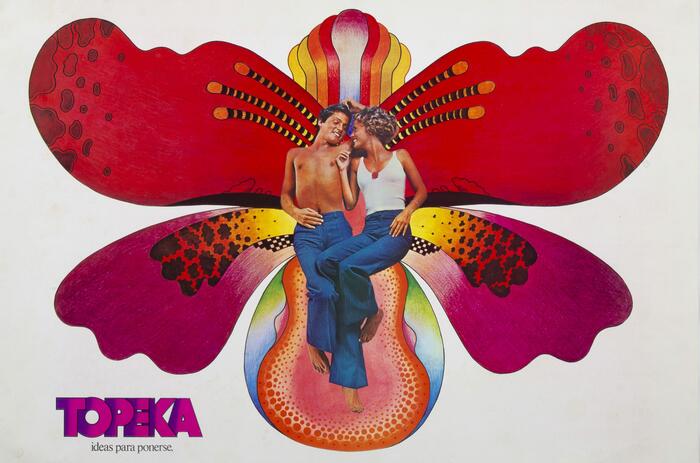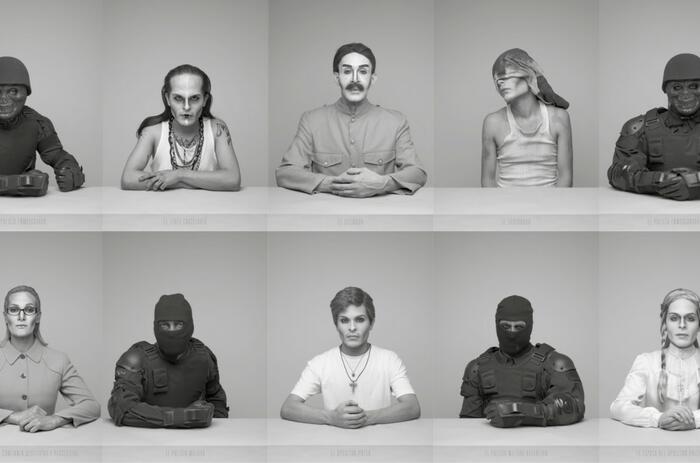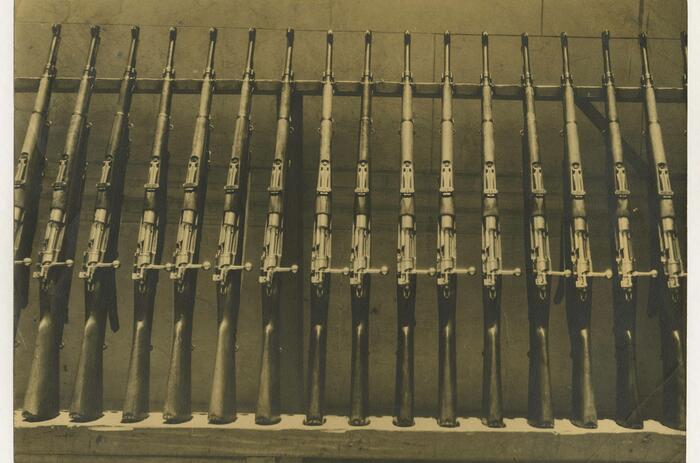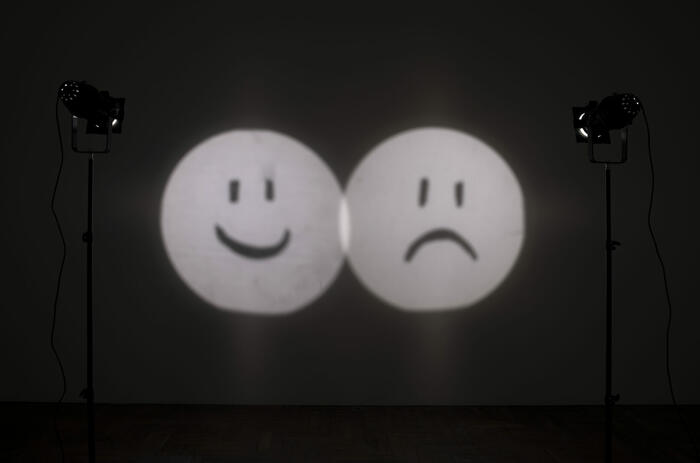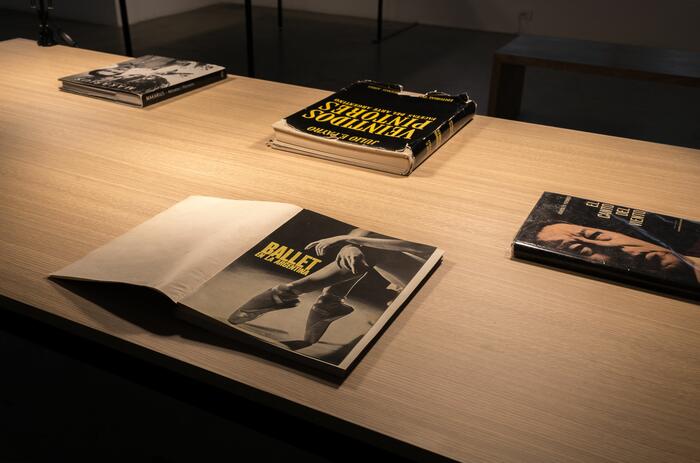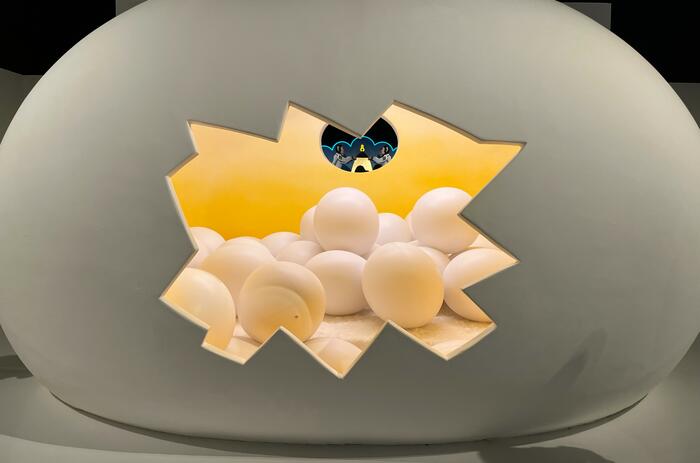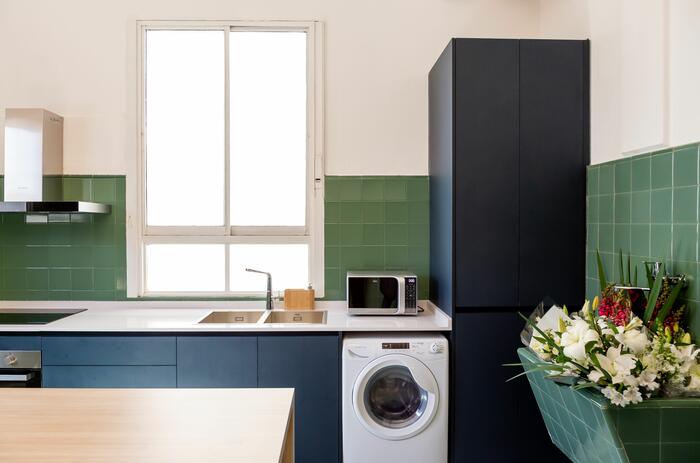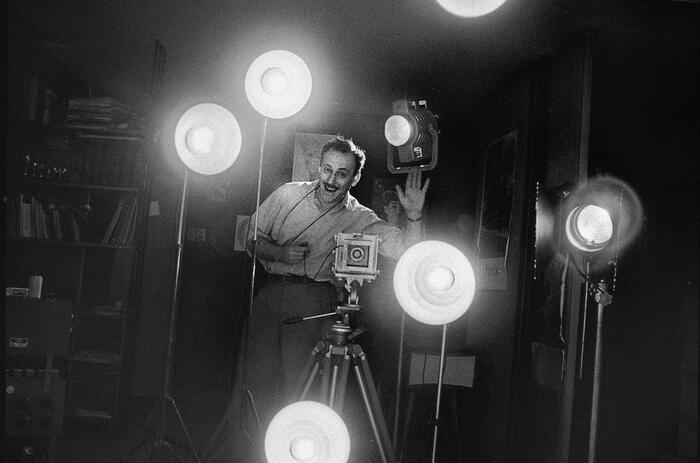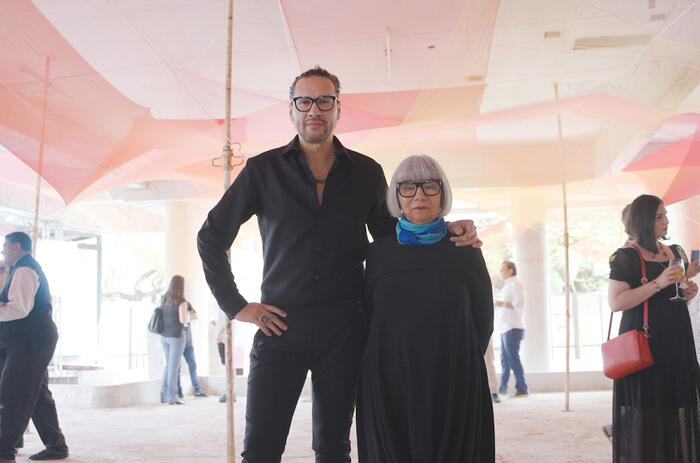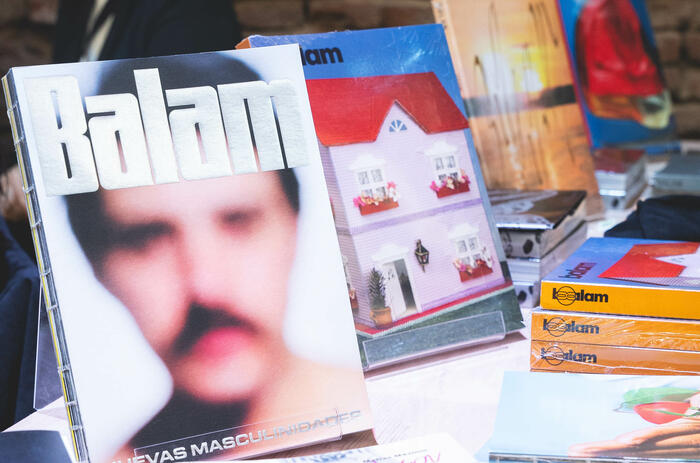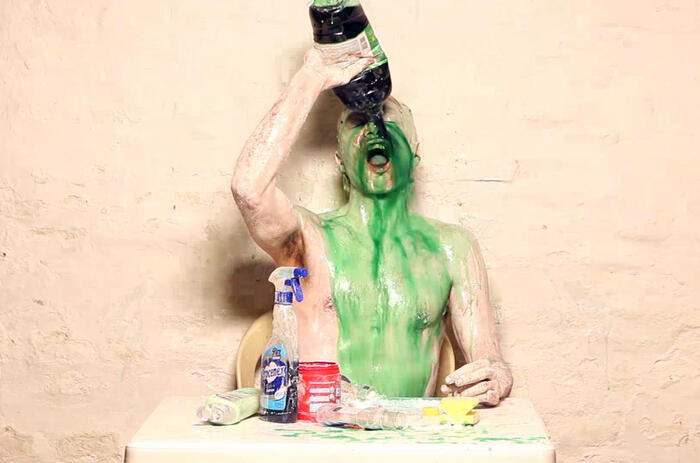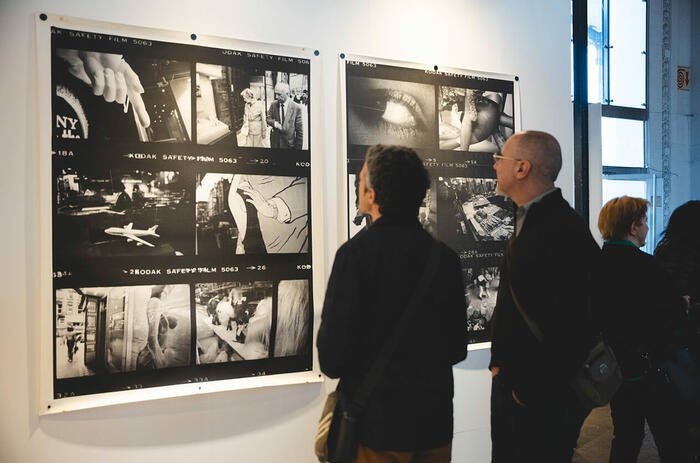YUYO GARDIOL: "I LIKE TO THINK THAT PHYSICAL SPACES ARE STARTING POINTS AND NOT ANCHORS"
Since 2012 as an artists' space and 2018 as a gallery, CRUDO manages exhibition spaces, participates in fairs and also manages and collaborates with residency programs, collectionism and artists' workshops. In an interview with Arte al Día, director and artist Yuyo Gardiol, talks about the origin and trajectory of the space.
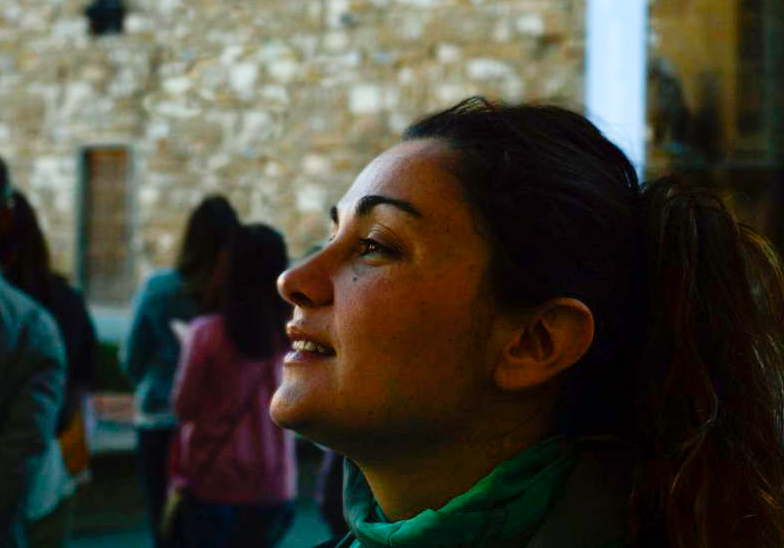
What was CRUDO's starting point and first goals?
I had recently graduated from the School of Fine Arts at the UNR University. My children were very young and I needed a workshop space outside my house and my home life.
At that time, I spent my time doing clinics, looking how to continue after my studies. I always remember that in a clinic with Rafael Cipolini, we read a chapter of a book on war strategies, where the chapter was titled "Burning ships". After that reading, I had the strong idea that if I didn't give my best, I would never achieve my goals.
As a born producer and manager, three months later I was inaugurating Viamonte artes y afines. My first self-managed space in a house that a couple of years later became the physical headquarters of Crudo.
What was fundamental in those early years was to create a meeting place for peers, a place that served as an excuse to propose and do everything we wanted to do and above all, everything that I wanted to happen and was not happening in the city and I thought it was necessary.
Those were very experimental and fun years. We did exhibitions, residencies, relaxed talks, film cycles, recitals, training sessions (where the teachers were invited based on the needs of the participating artists and not the other way around as it usually happens). We organized accessible art fairs, festivals, trips and incredible and unforgettable parties.
In retrospective, I believe that the initial driving force was the desire and the drive to create. And the objectives, to build community, generating a space for experimentation and training.
Clarification: CRUDO has two sites, one is exclusively for the gallery, which has 3 exhibition rooms (1 on the first floor and 2 upstairs), plus a 4th back room, and in the second site, the artists' workshops and the residents' workshop. Both are very close to each other in downtown Rosario.
Born and based in Rosario, CRUDO stands out for its federal ethos. What makes Rosario stand out from other artistic centers in the country? And what are some benefits of working in a team with experiences in other provinces?
Rosario is a wonderful cultural city. Historically it was a breeding ground for artists and continues to be so. There is a very rich artistic tradition. Geographically, being so close to Buenos Aires, but not being Buenos Aires is not at all a minor detail.
The federal profile is pure affinity. It was never something premeditated.
I am not from Rosario, maybe that has something to do with it (because Rosarino is extremely endogamic hahaha). I was born in San Carlos, a town in the province of Santa Fe. I did my high school studies in the city of Santa Fe, and university brought me to Rosario and love and my children being born here brought me closer to it.
My first project in 2009, (before Crudo and Viamonte), was the Mobile Residency, a project that consists of forming a group of a maximum of 15 people (artists, managers, curators, collectors) and travel to get to know a particular art scene. The production and programming of these residencies, to this day is one of the things I enjoy the most, it requires a lot of research, study and logistics. In those researches I met many artists with whom we became friends, we began to share ideas, views and then we started to work together and today they are part of the gallery staff.
I like to think that physical spaces are starting points and not anchors. Crudo has a lot of my nomadic octopus-spirit. Its physical headquarters are in Rosario, but its actions exceed those limits. They tend to adapt, coexist and parasitize friendly spaces and institutions. Because we enjoy working as a team, sharing, learning from experiences, growing collectively and in community.
Taking into account the residency programs, the Shared Workshop, and other instances of connection and training for artists, would you say that CRUDO is more focused on production than on sales? What is the advantage of this?
Today CRUDO is two different projects that feed each other. I would say that the focus is on production and sales.
On one hand, the training and production moment (which we love!). As managing artists, we enjoy being in the kitchen of the work. We are permanently in contact with new artists, projects and collectives. We love the useless and anti-system capacity of art. But no artist is served by accumulating works in his or her studio. That is why in 2018 we opened the gallery, where clearly the goal is to sell. And it is important to differentiate them because their objectives are different.
We form a staff of artists that we represent. We develop an annual program that is planned up to 2 years in advance. And we participate in national and international fairs, because we understand that the market is one of the fundamental gears of the art system.
The advantage is the combination of both projects. We are very demanding and we like to be in every detail. We know that for an artist it is key to have a studio space and that taking a client to the artist's studio is a unique experience. So, we work on all those layers.
Our staff is made up of artists that make up a national identity. Many of the artists we work with choose not to live in Buenos Aires because the territory they inhabit is fundamental to their work. We fall in love with the creative processes committed to consolidate their universes, expanding solid and forceful productions. From conceptual, contemporary and political poetics.
CRUDO Residencies: Why is it important to promote the development of artist residencies? Is there any aspect of these programs that CRUDO would like to highlight?
For many artists, residencies are a chance to break away from routine and focus fully on their work. For a residency to be possible, the artist must move to a space that is not his or her daily life, to have the opportunity to leave his or her usual world and interact with another context. It is there where the different dialogues and encounters are generated, whether with fellow residents, tutors or inhabitants of a community, as well as a different environment, culture or landscape/medium.
But at the same time, this dialogue and encounter is nourishing in both directions, both for the host scene and the guest artist. The works of the resident artists are enriched, at the same time that the host community is stimulated by this encounter.
In this sense, residencies today are very important as spaces for thought, production and even training. For this federal idea of art that we have at CRUDO, it is fundamental, because it is a way of being able to meet in the differences and particularities. It encourages heterogeneity in coexistence and the possibility of making daily structures less rigid.
For the gallery it is also fundamental, in the sense that many of the artists we work with, we met them in this kind of instances. That is to say, we don't do residencies thinking of adding artists to the gallery, but in this kind of encounters we find links or people with whom we find affinity and continue working.
-
2023.08.26 - Yuyo Gardiol, En la oscuridad absolutahasta una montaña es invisible, Museo Castagnino, Rosario. Foto por Juan Pablo Garcia.
It is evident that CRUDO is constantly involved in different networks with other galleries, with programs in fairs and circuits, and various cooperations at a social and commercial level. What are you specifically looking for with the collecting programs "La Medici" in 2023 and " Fragmentos de un discurso amoroso" in 2021?
To build networks and community, initially it was an intuitive and natural gesture.
We all are part of the same circuit, let's do things together! Over the years, this gesture has become a conscious attitude, a militancy.
I am a great promoter of building associations, collective activations, of sharing as much information as possible. Because I am convinced of collective work to make the art system grow. If the art market grows, the benefits will be for everyone, that's why it is important to work as a team.
Programs such as "La medici" or "Fragmentos de un discurso amoroso", are part of these actions that seek to expand and reach new audiences. Bringing contemporary art closer to the lives of so many who look and say they don't understand, don't know, don't know and therefore don't dare to enter.
If we start from the premise that we are all potential buyers of art, that we can all enjoy contemplating a work of art in our homes, that we can all be challenged by art, it is only a matter of activating our desire. My eldest son, for example, when he was 9 years old, bought his first work with his savings, a divine Gaston Herrera! Living in a house where everything that was made, looked at and talked about was art, obviously, the desire for it to be his was very clear and natural. Besides, he knew it could be bought. Something that seems very obvious, but many times the public does not know that the works are for sale.
And as dear Fernanda Aquere said in one of La Medici's meetings this year "Nobody buys what they don't know". We have to work on that!
-
Fachada CRUDO
CRUDO is one of the six galleries invited to the Fuera de Foco section at Pinta BAphoto 2023, curated by Bárbara Golubicki. Yours and Juan Ignacio Cabruja's work will be exhibited there. How do you use the game with light and the experimentation with media in relation to the spirit of Fuera de Foco?
In Juan Ignacio Cabruja's work, quoting him: light illuminates, points to a situation we want to study. The out of focus is related to the impossibility of seeing what is behind it, a loss of the image, images that try to safeguard precious moments are lost due to the lack of focus, leaving diffuse memories. Paradoxically, if we look at a light source directly, it blinds us and damages our sight, but when we put diffuser filters on it, it allows us to see its morphology in a kinder way.
And my works are photographs of my skin that I took by placing the cell phone camera at a very close distance, and the light makes that image, out of focus by the proximity, is tinged with the colors that surround me. I like to think that we are so permeable to the environment that even the skin can change color. I print these photographs on satin, the fabric provides a special shine, very sensual and atmospheric, which completes and produces the subtlety that I am interested in generating in each piece.
-
Yuyo Gardiol, De la serie Paisaje cercano, 2023, toma directa de celular impreso sobre tela satén y con marco dorado a la hoja, 41 x 66,5 cm _ 37 x 41,5 cm _ 37 x 41,5 cm. Crudo Arte Contemporáneo
-
Juan Ignacio Cabruja, Ambiente compacto, remix recorded, 2022, objeto compuesto por maderas de obra, luces leds y lienzo, 120 x 75 x 60 cm. Crudo Arte Contemporáneo.

